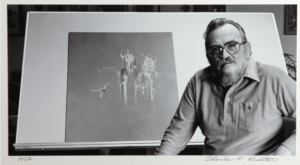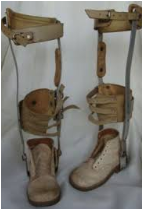How to change your perception of anxiety and panic
One of the first things I like to help clients do is change their perception of anxiety and panic. We so often perceive anxiety and panic to be a thorn in our side and the bane of our existence. But the harsh judgment we have of anxiety and panic and ourselves for suffering with them actually keeps us stuck.
I want to share a profound and compelling story about an American Indian man named David Chethlahe Paladin told by Carolyn Myss in her book Anatomy of the Spirit. It highlights how perception and meaning we give to events significantly affects our resilience and ability to recover from them.
David Paladin – a code talker from WWII
He was used in a spy network due to his Navajo language, but he was captured and tortured by the Nazis and then sent to Dachau concentration camp.

When he arrived at Dachau, he helped another prisoner and a guard asked: Are you christ? He then ordered his men to nail David’s feet to the floor and David was made to stand like that with his arms out for three days like Christ on the cross. Whenever he buckled, they hoisted him back up.
David barely made it through the war and when American soldiers found him, he was unconscious and dying. They transported him home and he spent two and a half years in a coma in a military hospital in Michigan.

His family and friends were shocked to see his state and a meeting was held with the tribal council. After listening to David tell them what happened, they deliberated. The next day, the elders asked David to meet them by the Little Colorado river.
They took off his leg braces, tethered his waist with a rope and threw him in the deep water. The elders commanded David to call back his spirit; telling him that no one can live without his spirit.
At first, David started to drown – not being able to use his legs, and he knew he was fighting for his life. He kept praying to release all anger and hatred from his body.
Visions of the men that tortured him came before his eyes and the one guard that used to stuff maggots and chicken entrails down his throat appeared before him. David hadn’t been able to forgive this man, believing him to be cruel.
However, in the depths of the river, the vision of this guard said to him: “I was trying to keep you alive and that was the only food I could find.”
Experiencing the truth of that, David was able to immediately forgive the man and was able to use his legs to kick to the surface.
Now this is quite an extreme story, but what if we have many misperceptions in our life? What if we misjudge ourselves? What if we completely misunderstand the anxiety and panic in our lives?
How do you feel when you play with the idea that anxiety and panic might actually be trying to keep you alive too?
Imagine that. This thing that we can’t stand and maybe even hate, is really just trying to protect us and keep us safe…
I feel deep gratitude and it makes me emotional to think that I was judging myself so harshly for it.
Everything serves a purpose in our lives… And it is only our judgment of it being good, bad or ugly that contributes to us feeling more fear or empowered.
So, what if our perception of anxiety and panic were all just a misunderstanding?
Change your perception of it and you will change your life.
An exercise to help you change your perception of anxiety and panic
I call this ‘the flip side exercise.’
You’re going to need a blank piece of paper or a journal and your phone for a timer.
- On one side of the paper or page, spend 10-15 minutes writing down as many dot points as you can as to why you dislike anxiety and panic, why it sucks and how it’s impacting your life.
- If there is anything negative you want to say to anxiety and panic, write that down on that page too.
- Once your timer goes off, take a deep breath and then slowly re-read each dot point. If any emotions come up while you’re reading your list, note them down and rate them on a scale of 0 to 10.
- Give yourself some time to feel your emotions if they come up. If at any stage that feels overwhelming for you, hold your hand in the ‘I love you’ hand posture (as pictured), place it over your heart and repeat the words ‘infinite love & gratitude’ until you feel the intensity of the emotions subside.

Now, here’s the flip side. Turn the page over.
- On this side, spend 10-15 minutes writing down as many dot points as you can about how you think anxiety and panic could be helping you.
- At first, you may be staring at the page for a while asking yourself, ‘How could anxiety and panic possibly be helping me?’
- Start with some of these questions:
- ‘Does anxiety and panic help my need for safety and security?’
- ‘Do other people support me because I have anxiety and panic?’
- ‘Do people treat me differently because I have anxiety and panic?’
- ‘Does having anxiety and panic stop me from trying new things and possibly having to deal with my fear of failure or fear of judgment?’
- ‘What is the most important function anxiety and panic is serving in your life?’
- This next question is important and I suggest you give yourself sometime to sit with it: ‘If anxiety and panic had a voice, what messages might they have for me? Is there something important they’re trying to tell me?’
- Once you’ve spent time on this side of the page, re-read everything you’ve written down. Write down any emotions that come up for you and rate them on a scale of 0 to 10.
This exercise will provide some important insights and help give you a new perception of anxiety and panic. I recommend you do it more than once.
Everything in our life is there for a reason and anxiety and panic is definitely serving a purpose for you.





